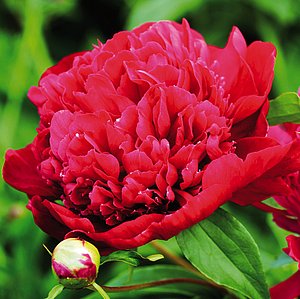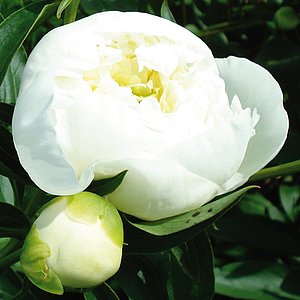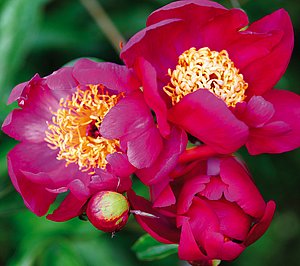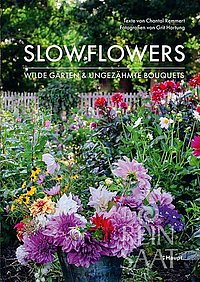E-Mail office(at)reinsaat.at
We are available by phone and our farm shop is open:
Monday – Thursday, 8:00 AM – 5:00 PM & Friday, 8:00 AM – 4:00 PM
(Lunch break 1:00–1:30 pm)
ReinSaat-Blog | Johanna Yagi
We are pleased to regularly present blog posts here from our ReinSaat colleague Johanna Yagi. She is one of our ReinSaat experts in vegetable cultivation and breeding and will share her extensive knowledge and experience on the topic of open-pollinated vegetable, herb, and flower diversity. We hope you enjoy reading!

Peonies – A Lush Renaissance
Year after year, a spectacle of extraordinary sensuality unfolds at Rose Saatzucht in northern Erfurt. In May and June, the peony bloom crowns the early summer and transforms the once densely green field into a sea of color.
Annegret Rose has been cultivating and propagating historic French peonies with great passion and dedication for many years, following Demeter guidelines. We are grateful for the ongoing, respectful, and friendly cooperation with Rose Saatzucht Erfurt and proud to distribute their impressive range of peonies.
Blooming Testimonies of French Garden Art
In 19th-century France, passionate gardeners created elegant, lushly double-flowered, and delicately fragrant varieties by deliberately crossing simple farmer’s peonies.
Their names – Monsieur Jules Elie, Duchesse de Nemours, Inspector Laverne – testify to their noble heritage.
Today, these historic varieties are experiencing a true renaissance, as not only their beauty and opulence but also their resilience, winter hardiness, and longevity reflect the spirit of the times.
Did You Know?
Despite the similarity in name, peonies are not related to roses but belong to their own plant family – the Paeoniaceae. This family comprises 33 species that vary in flower form and colour, ranging from single to double blooms and from white to deep red. Before a peony root is ready for sale, it grows for 6–7 years on Annegret's biodynamically cultivated fields. To ensure your peony brings you joy for decades, please keep the following in mind:
Cultivation Tip
Planting
Once a peony has found its place in the bed, it should ideally not be moved again. Choose a location that offers optimal conditions for many years to come:
- Full sun – the more sunlight it receives, the more abundant the flowering
- Deeply loosened, humus-rich, nutrient-dense soil; well-drained and without waterlogging
- Approx. 1 m² of bed space per rootstock
The best time to plant is in autumn, from September to November. Dig a hole twice as wide and as deep as the root system. Position the roots so that the buds (eyes) sit no deeper than 2–3 cm below the soil surface. Planting too deep can prevent blooming.
Care
Peonies are relatively low-maintenance. Fertilising is done in spring, but especially after flowering using organic fertilisers (compost, horn shavings). We recommend watering during prolonged droughts and for newly planted roots in their first year. Due to their considerable growth height (up to 100 cm) and lush blossoms, providing simple support is advisable.
Faded flowers should be removed regularly. In late autumn, cut the foliage back close to the ground. Established roots are completely frost hardy. In their first winter, however, your new peony will appreciate some protection with fleece or leaves.
Flowering
Depending on the variety, peonies bloom from early May to the end of June. With favourable site conditions, more flower buds will form each year.
In floristry, the peony is considered one of the most elegant and decorative cut flowers. To keep them fresh in the vase and allow them to reveal their full beauty, please consider the following when cutting:
- Do not harvest any flowers in the first year after planting
- Leave the leaves below the cut on the plant to ensure lush budding the following year
- The ideal time to cut is the “balloon stage” – well-developed buds that yield slightly to gentle pressure and are just beginning to open, showing colour, are best cut early in the morning. In warmth, the buds open quickly.
- Remove all leaves that would be submerged in water
- Cut stems at an angle to improve water uptake
- Change the water regularly
- Flowers intended for direct sales can be cut earlier and stored for 2–3 weeks in a frost-free but cool place
Peonies also make stunning dried flowers. To dry, hang the bud-stage flowers upside down in a dry, warm, and airy place for 2–3 weeks.
Diverse, fragrant, and full of colour – the biodynamic peony selection by Annegret Rose, available at ReinSaat!

Request a free printed version, browse online, or download the PDF.
Request a free printed version, browse online or download the PDF.







